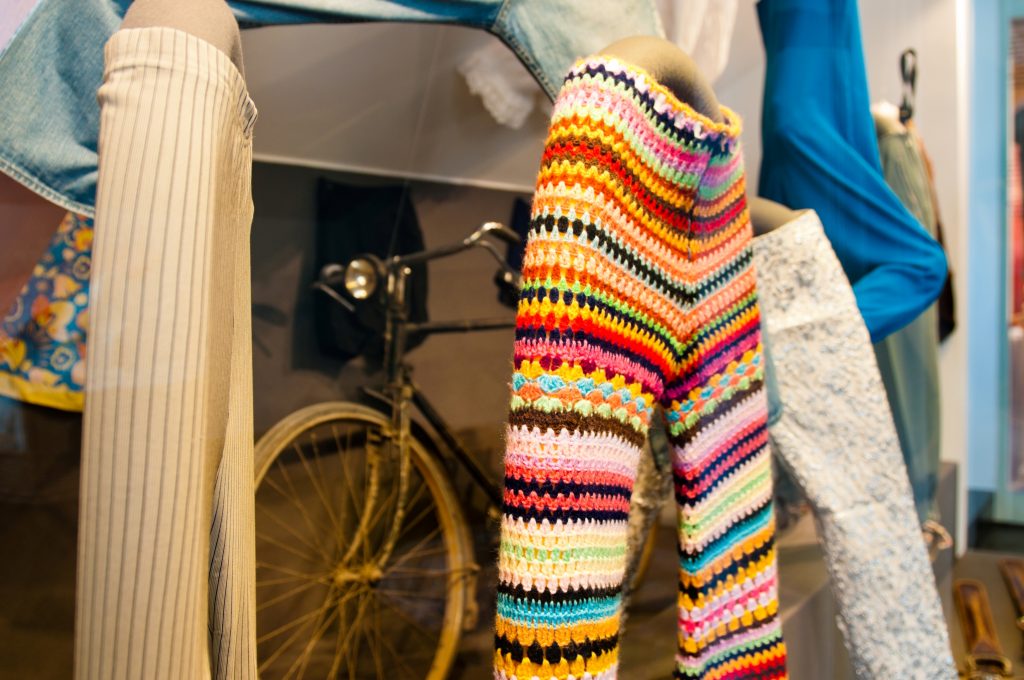
Hand crocheted pants, by unknown, 1970s. Women’s Museum Meran.
For centuries, it was a taboo for European and American girls and women to wear pants, until the 1970s.
Crocheting, knitting, sewing: the art of crafting your own clothes goes back ages and was very common during most of the 20th century. Most girls learned about needlework from the time they were little. For them, it was no big deal to sew a dress or crochet a bonnet: a typical day’s work.
So it was probably not a big challenge for a girl to create these beautiful bright colored pants in the 1970s in Europe. She used different types of yarn and wool to create her pants; she was probably recycling the leftovers of other knitting projects. She would wear her pants in everyday life in the streets, meeting friends, and on a protest march to show her authenticity, her naturalness, and individuality.
When fashion changed in the 1980s, she probably stopped wearing her hand-crocheted pants. However, fashion changed, and she did not want to throw away her beautiful hand-crocheted pair of pants. So she kept them in a box in her attic. Thirty years later, she realized that her piece of hand-made clothing not only told the story of her youth, but it also represented the spirit of a whole generation of young girls in the 1970s. So she decided to donate her crochet-pants to the Women’s Museum Meran in Italy, where it is exhibited and tells its story to everyone visiting the museum.
Crocheting pants might seem a rather innocent crafting project today, but at the time it was a sign of protest. Women’s pants became acceptable only in the beginning of the 1970s. Throughout the decade, pants remained a sign of freedom and independence, especially for young women. Pants were a symbol of a whole generation of quite rebellious young women who claimed more rights for themselves.
At the same time, crocheting your own clothes was a statement of the young generation. After mass-produced clothing hit the mainstream in the 1960s, girls started to crochet their own clothes in the 1970s and showed that they “went back to nature”. Every piece of clothing: the vest, the bonnet, the dress, the scarf, the pants, were crocheted or knitted.
-Women’s Museum Meran
Visit the Women’s Museum Meran online.
This post is part of our 52 Objects in the History of Girlhood exhibition. Each week during 2017, we explore a historical object and its relation to girls’ history. Stay tuned to discover the incredible history of girls, and be sure to visit the complete exhibition to discover the integral role girls have played since the dawn of time.
